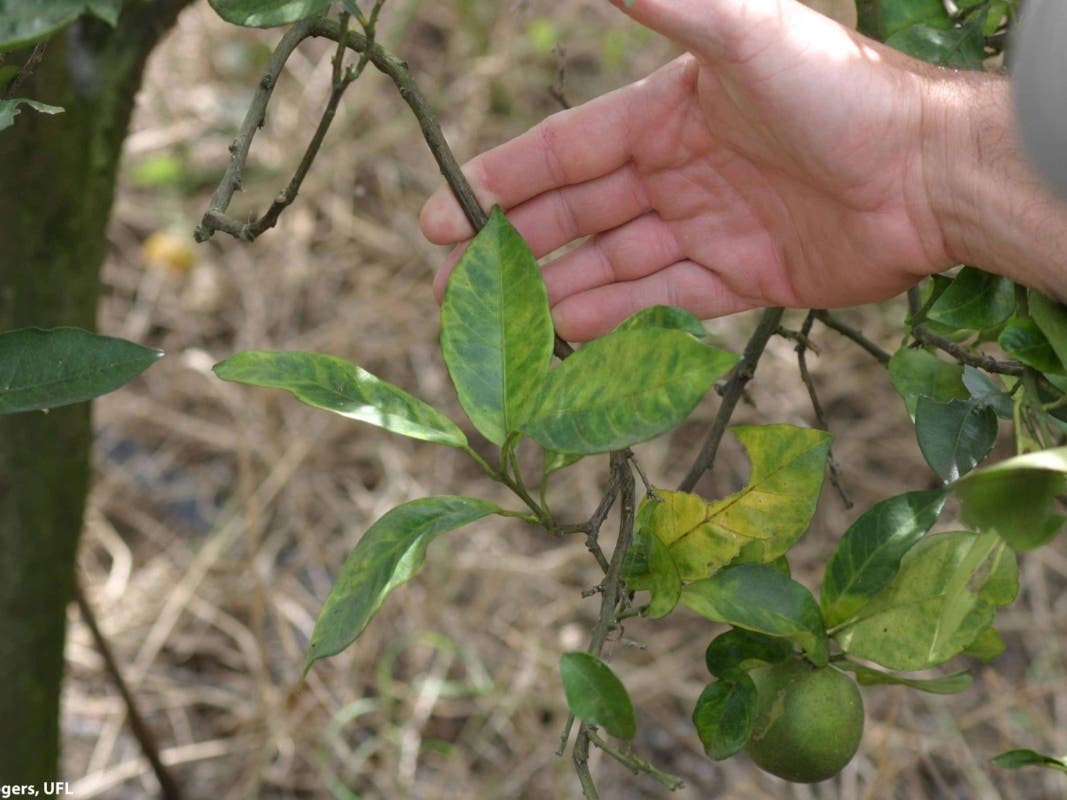Home & Garden
Citrus Killing Disease Zoom Meeting Q&A with CDFA Top Supervisor 9/22
Citrus Killing Disease Zoom Meeting Q&A with CDFA Top Supervisor 9/22 7pm
California Rare Fruit Growers South Orange County Chapter https://southoccrfg.org presents: Citrus Greening Disease Facts & Myths with Q&A (via Zoom Meeting https://southoccrfg.org/Events.php ; open to the public with pregistration
Date and time: Wednesday, Sept 21st, 2022 at 7:00pm PST for 60 to 90 minutes
Speaker: Keith Okasaki - CDFA Senior Environmental Scientist, State Supervisor of the Citrus Pest & Disease Prevention Division, California Department of Food & Agriculture
Find out what's happening in Escondidowith free, real-time updates from Patch.
Speaker background: Keith Okasaki is THE CDFA supervisor in charge of handling the HLB Citrus disease and the quarantine covering expanding parts of California.
His jurisdiction is ALL of California.
Basically - TOP Person on this.
In this presentation he will be discussing the background and impact of the Citrus Greening Disease with an eye on current developments affecting southern California. He will be covering observed practices that have shown impact in limiting the spread of this disease at home and in agriculture; and will spend some time to address questions supplied by registered attending audiences to dispel common myths surrounding this problem. Symptoms in affected plants will be discussed Including why people should not be moving citrus plants or cuttings within or around the quarantine areas
Find out what's happening in Escondidowith free, real-time updates from Patch.
The Situation:
Citrus Greening Disease has spread to most of southern California and has prompted the biggest plant distributors such as Home Depot, Armstrong Garden Center, and Monrovia Nurseries to remove citrus plants from their catalogs. Countless homeowners and agricultural farms across the region have been forced to cut down their beloved trees in the face of this spreading disease.
Citrus huanglongbing (HLB), aka citrus greening disease, is one of the most destructive diseases of citrus worldwide. Leaves of newly infected trees develop a blotchy mottle appearance. On chronically infected trees, the leaves are small and exhibit asymmetrical blotchy mottling (in contrast to Zinc deficiency that causes symmetrical blotching). Fruit from HLB-infected trees are small, lopsided, poorly colored, and contain aborted seeds. The juice from affected fruit is low in soluble solids, high in acids and abnormally bitter. The fruit retains its green color at the navel end when mature, which is the reason for the common name "citrus greening disease." This fruit is of no value because of poor size and quality. There is no cure for the disease and rapid tree removal is critical for prevention of spread.
Originally thought to be caused by a virus, it is now known to be caused by unculturable phloem-limited bacteria (Candidatus Liberibacter africanus, Candidatus Liberibacter asiaticus and Candidatus Liberibacter americanus). There are three forms of greening that have been described. The African form produces symptoms only under cool conditions and is transmitted by the African citrus psyllid Trioza erytreae, while the Asian form prefers warmer conditions and is transmitted by the psyllid. The HLB bacteria can infect most citrus cultivars, species and hybrids and even some citrus relatives.
Economic Impact:
HLB is one of the most devastating diseases of citrus and since its discovery in Florida in 2005, citrus acreage in that state has declined significantly. If the disease were to establish in California, the nursery industry would be required to move all of their production under screen houses, pesticide treatments for the vector would be instituted resulting in greatly increased pesticide costs (3-6 treatments per year) and indirect costs due to pesticide-induced disruption of integrated pest management programs for other citrus pests. A costly eradication program would need to be instituted to remove infected trees in order to protect the citrus industry.
Distribution of HLB:
In April 2012, after about a week of testing, the California Department of Food and Agriculture (CDFA) removed a pumelo tree with a lemon graft from Hacienda Heights in Los Angeles County after the tree and an Asian citrus psyllid found on the tree both tested positive for Huanglongbing.
In 2005, HLB was also found in Florida and it is now known to occur in Louisiana, Georgia, South Carolina, Cuba, Belize and Eastern Mexico. Worldwide, HLB is also present in China, eastern and southern Africa, the Indian subcontinent, Mauritius, Reunion, the Saudi Arabian peninsula, and Southeast Asia.
Research:
Research is focusing on characterization of the bacteria, development of detection methods, and control of the disease and the psyllid.
To date, control of the disease is based on planting HLB-free citrus germplasm, eradication of infected citrus plants, and control of the vector with systemic insecticides. Countries with HLB learn to manage the disease so that they can still produce citrus. In California, the best strategy is to keep this disease out. This goal is supported by both federal and state quarantine regulations and the University of California's Citrus Clonal Protection Program, which provides a mechanism for the safe introduction of citrus germplasm into California.
South OC CRFG chapter
https://southoccrfg.org/
Any Questions for their chapter contact them through their website at
https://southoccrfg.org/Contac...
They find that emails get buried, While submissions through their contact us page does not also, They do not accept solicitations of any kind.
If you are not familiar with HLB,
content below explaining it is from https://cisr.ucr.edu/invasive-...
